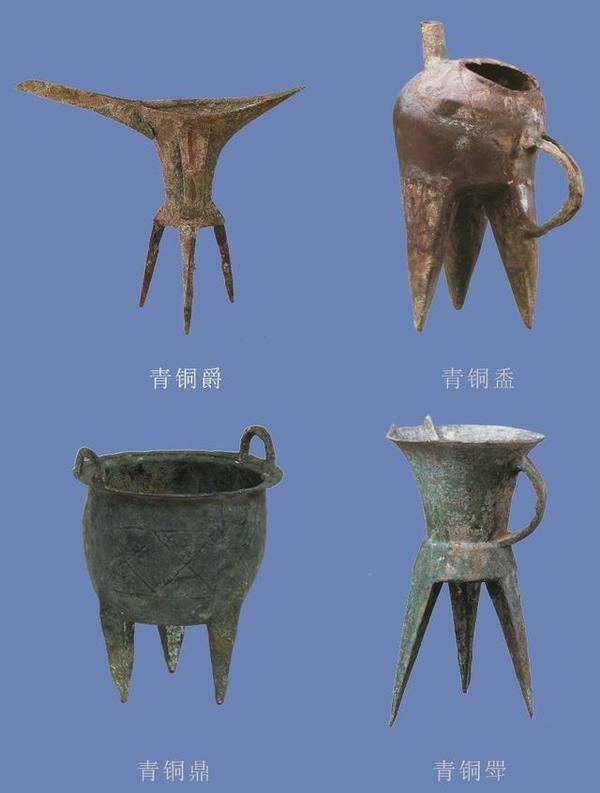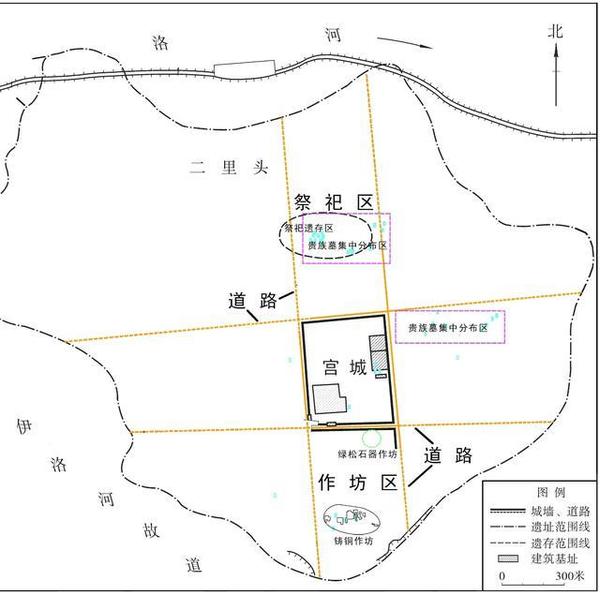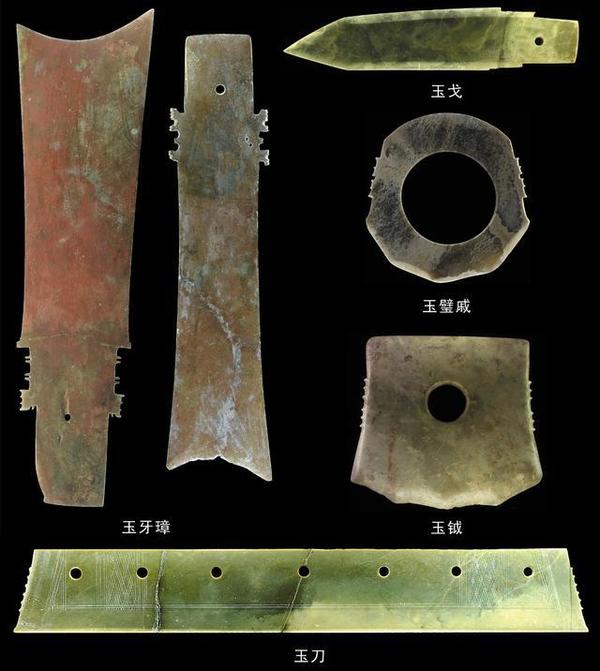In recent years, the most eye-catching ancient site in Central China's Henan province is undoubtedly the Erlitou Site in Yanshi of the province's Luoyang city, because it is closely related to the Xia Dynasty (2070 BC-1600 BC) which is a clout itself online.
Click on the video
On September 6, we came to the Erlitou Site again. What impressed us deeply are the newly-opened Erlitou Site Museum of the Xia Capital, the Archaeological Park of the Erlitou Site, and the cultural square in front of the Erlitou Workstation of the Institute of Archaeology, CASS.
On the outside wall of a local villager's home writes a slogan "The Origin of Huaxia (Huaxia being a historical concept representing the Chinese nation and civilization) & The Earliest China".
The reason why the villagers of the Erlitou village have such a cultural confidence is because of an ancient site uncovered in the south of the village and the archaeologists' efforts over the past 60 years.
The major discoveries at the Erlitou Site. [Photo provided to Henan Daily App]
On the wall of the archaeological team's office hangs an old picture which depicts a man who has climbed to the top of a pole erected in an empty field, just like an aerialist. In fact, he was taking pictures for the site. His action looks quite dangerous, doesn't it?
The results of the efforts and sweat of archaeologists are displayed at the the Erlitou Site Museum of the Xia Capital, which is becoming an internet-famous site.
What is the most important discovery at Erlitou village?
What is the most important discovery at the Erlitou Site?
Turquoise-inlaid Dragon-shaped Bronze Object. [Photo provided to Henan Daily App]
Is it the exquisite and vivid Turquoise-inlaid Dragon-shaped Bronze Object?
Is it the tall, slender and beautiful Bronze Jue (爵, an ancient wine vessel) Decorated with Nipples?
Is it the elaborate and exquisite Turquoise-inlaid Bronze Plaque?
These cultural relics are of great significance and are treasures carefully made by the ancient people living at the area of Erlitou.
However, for Zhao Haitao, who heads the archaeological team, the crisscross roads in the central area of the Erlitou Site are of the highest value and importance to the study on the Erlitou Site as the capital city of the Xia Dynasty. The layers of hard loess on the roads have become the archaeologists' favorite because of their value of proof.
According to Zhao, there are at least 4 roads (2 vertical roads and 2 horizontal ones) in the central area of the Erlitou Site, each 10-20 meters in width. The crisscross roads divide the ancient capital city into many square and regular grids with different functions, forming a multigrid layout.
Then what is the specific design inside of it?
During the excavation, 3 important areas were uncovered, namely the palace area, the ritual area and the state-run workshop area, said Zhao. These areas are located along the site's central axis from north to south with the palace area at the center. Near the central axis and to its east and west also discovered the living and burial sites of aristocrats. So the Erlitou Site has an orderly multigrid layout with the palace area at the center surrounded by other functional areas based on their importance. The regular areas are furthest from the central area. Such a neat and orderly layout not only shows a strict social hierarchy and ruling order, but conforms to the capital city's planning principle put forward by Chinese philosopher Guan Zhong (723 BC-645 BC) -- "Found a state at the center of the world, build the palace buildings at the center of the state and set up the imperial court at the center of the palace buildings". The grand capital city with the large complex rammed-earth palace buildings reflects a clear imperial city system at that time.
The layout of the Erlitou Site. [Photo provided to Henan Daily App]
This kind of layout sounds familiar, doesn't it? It is like the central axis of Beijing during the Ming (1368-1644) and Qing (1644-1911) dynasties with the Forbidden City, the Hall of Supreme Harmony, the Temple of Heaven and the Temple of Earth located on it. Prior to the discovery of the Erlitou Site, no similar remains had been found. So it has been considered as the ancestor of such a kind of layout. Besides, the Erlitou Site has many groundbreaking findings with many "oldests" in China, such as the country's earliest main stem network, imperial city, central axis, rammed-earth building complex with multiple yards, high-level sacrificial remains, official handicraft workshop area, bronze-casting workshop, turquoise-processing facility, and a horde of ritual bronze vessels and weapons. All of them are core elements of Erlitou, the capital city.
Standing at the No. 1 foundation for palace buildings in the Archaeological Park of the Erlitou Site, Zhao introduced the site's planning and layout to us. It is generally believed that the Erlitou Site is the oldest large capital city during the Bronze Age (at least 4,000 years ago) in East Asia so far uncovered, a key to the exploration of the Xia and Shang (1600 BC-1046 BC) dynasties. The Erlitou Culture (around 1635 BC-1565 BC) represented by the Erlitou Site is the oldest "core culture" in China and East Asia. Featured by its groundbreaking layout, broadness and large-scale cultural radiation, Erlitou became the oldest sovereign state and established itself as the core and leader of the overall process of Chinese civilization. It was like a dynasty, not only because of the Erlitou Site itself, but the overall distribution of the Erlitou Culture. Among 400 settlements of the Erlitou Culture, the 300-square-meter Erlitou was their capital with regional center settlements covering an area from hundreds of thousands to more than one million square meters, secondary center settlements from about 100 thousand to 300 thousand square meters and numerous smaller settlements, forming a pyramidal hierarchical structure and a spatial distribution pattern.
The Erlitou Site and Zhenxun (斟鄩), a capital city of the middle and late Xia Dynasty
After Zhao's introduction, it dawned on us that the sites of the Erlitou Culture that we had visited in the west of Zhengzhou, such as the Wangjinglou Site, the Dongzhao Site, the Dashigu Site, the Shaochai Site, etc., are all located to the east of the Erlitou Site, forming a fan shape. What caused it?
During the Erlitou Culture, centered around Erlitou, a large settlement group featured by clear layout, strict hierarchical system and multiple rivers was formed in the hinterland of the Central Plains, said Zhao. Covering the whole area of the Central Plains, it probably even occupied an area which the political entity of the early Erlitou state could effectively control, showing that a well-developed governance system had been formed at that time. Many scholars pointed out that the Erlitou Site was the location of Zhenxun, a capital city of the middle and late Xia Dynasty, while the large number of city sites and settlements to its east were established to defend invaders of the later Shang Dynasty. Although the Xia Dynasty was finally replaced by the Shang Dynasty, it had a profound influence on the civilization of the Shang Dynasty and the Zhou Dynasty (1046 BC-256 BC). The Erlitou Culture is the main and direct source of the Erligang Culture, which has a direct and significant impact on the latter's ritual culture, political structure and control area. In other words, Erlitou's social integration and system construction during the Erlitou Culture were institutionalized through the expansion and enfeoffment in the Shang and Zhou dynasties, thus laying a foundation for ancient "China".
The major discoveries at the Erlitou Site. [Photo provided to Henan Daily App]
According to Zhao, since 2019, excavation has been carried out in the southwest of the No. 1 foundation for palace buildings with many discoveries. For example, the east-west roads were discovered to stretch further to the west with the remains of walls discovered on the roadsides, indicating a broader grid layout. On the roads discovered the east-west ruts of two-wheeled vehicles with a width of 1 meter. Near the roads also found the waste pits of bone-processing workshops.
The excavation at the Erlitou Site is still in progress, and more discoveries are expected to be made. (Chinese source: Henan Daily App Reporter: Zhang Tiyi Hu Chunna Translator: Zhao Hanqing Video: Wang Junyi Proofreader: Ding Lan)
Related reports
The Xia Dynasty Travel Episode II The Dongzhao Site in Zhengzhou: 'Bridgehead' of the Xia Dynasty
The Xia Dynasty Travel Episode V The Puchengdian Site: Two Ancient City Ruins Discovered
The Xia Dynasty Travel Episode VI The Xinzhai Site in Xinmi: The First Capital of the Xia Dynasty?
The Xia Dynasty Travel Episode VII The Yuzhuang Site: Unveiling the Noble Life 4,000 Years Ago






